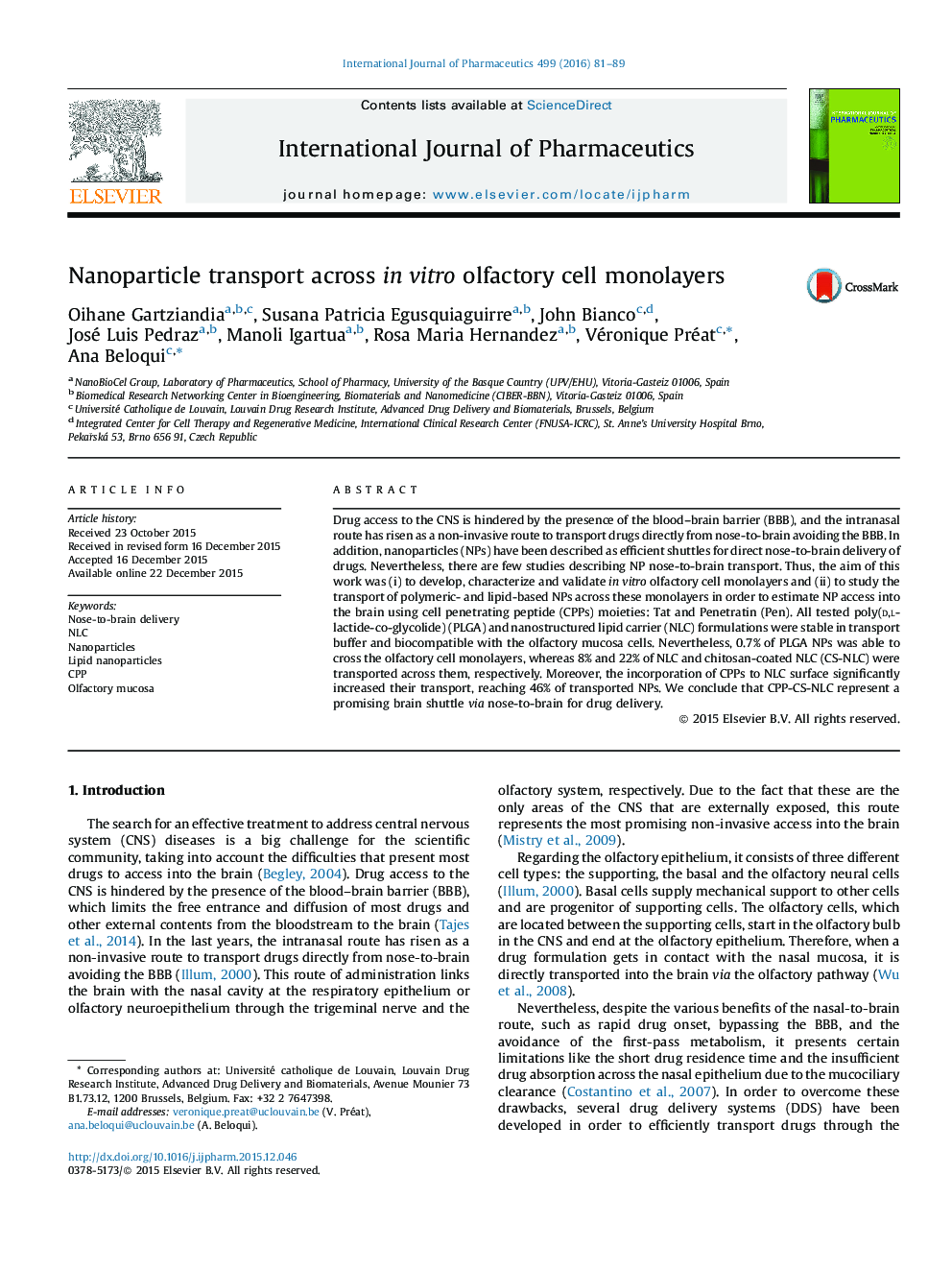| Article ID | Journal | Published Year | Pages | File Type |
|---|---|---|---|---|
| 5818087 | International Journal of Pharmaceutics | 2016 | 9 Pages |
Drug access to the CNS is hindered by the presence of the blood-brain barrier (BBB), and the intranasal route has risen as a non-invasive route to transport drugs directly from nose-to-brain avoiding the BBB. In addition, nanoparticles (NPs) have been described as efficient shuttles for direct nose-to-brain delivery of drugs. Nevertheless, there are few studies describing NP nose-to-brain transport. Thus, the aim of this work was (i) to develop, characterize and validate in vitro olfactory cell monolayers and (ii) to study the transport of polymeric- and lipid-based NPs across these monolayers in order to estimate NP access into the brain using cell penetrating peptide (CPPs) moieties: Tat and Penetratin (Pen). All tested poly(d,l-lactide-co-glycolide) (PLGA) and nanostructured lipid carrier (NLC) formulations were stable in transport buffer and biocompatible with the olfactory mucosa cells. Nevertheless, 0.7% of PLGA NPs was able to cross the olfactory cell monolayers, whereas 8% and 22% of NLC and chitosan-coated NLC (CS-NLC) were transported across them, respectively. Moreover, the incorporation of CPPs to NLC surface significantly increased their transport, reaching 46% of transported NPs. We conclude that CPP-CS-NLC represent a promising brain shuttle via nose-to-brain for drug delivery.
Graphical abstractDownload high-res image (128KB)Download full-size image
